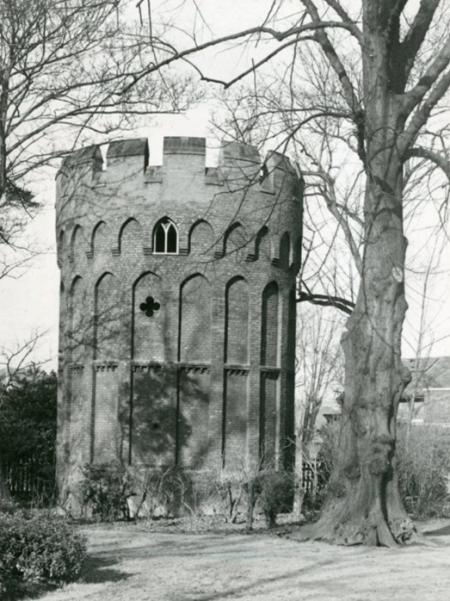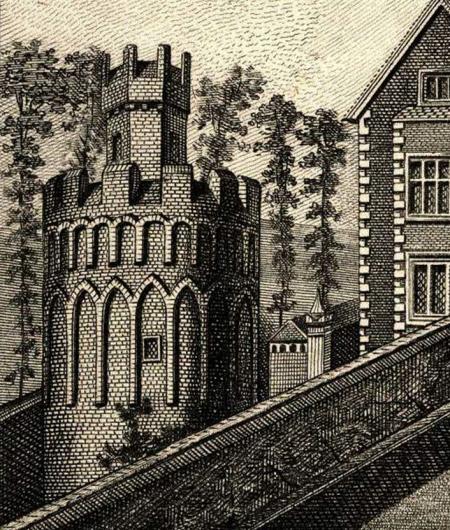The Tudor Tower
An outstanding historic building in today’s urban landscape, the mysterious Tudor Tower and its many stories have intrigued people for centuries.

Tudor Tower in 1949
Built in 1514 using locally made bricks, the Grade 1 listed tower is the oldest visible part of Bruce Castle. A similar Tudor brick porch on the neighbouring parish church of All Hallows has crenellations that echo the design of the Tudor Tower and its craftsmanship.
Sir William Compton, Groom of the Stool and a royal favourite of Henry VIII, was Lord of the manor and during his upgrades of the building added this tower to the estate. Mystery surrounds what the tower was used for. Its history has always intrigued.
When Henry Hare, 2nd Lord Coleraine, was Lord of the manor at Bruce Castle, he was investigating the history of Tottenham in 1701. Almost 200 years after the tower was built, Henry - a keen antiquarian - was unclear about its history.
‘No mention can I find anywhere of the great brick round tower …..whether it was built for a Monument house or for a Mews or for a Pigeon house or as a Prison …...’
You can explore for clues about the Tower by looking at the building and studying four centuries of original paintings, prints and drawings on display in the Museum. Amongst the stories about the Tower, more recent thought believes it was a hawks’ mews (a home for keeping hawks for hunting) as well as part of a structure supplying water to the house.

Archaeological investigations, 2006.
Archaeological investigation using GPR survey techniques contributed to our understanding of what lies beneath the ground, and a community archaeological dig revealed more. Uncovering everyday items belonging to the Victorian children who attended Bruce Castle School, the highlights can be seen on display in our downstairs galleries.
During 2021-2022, the Tudor Tower has had major investment through a grant from Historic England and Haringey Council. The roof has been restored through traditional craftsmanship. Brick-laying techniques using lime mortar are currently ongoing to conserve the brick façade.
Once complete, the Tower will come back into community use as a pop-up art gallery, an intimate space to get married, and a place for schools and tour groups to explore.

Engraving of 1686 painting with extra turret
As a unique survivor in this country, future archaeological exploration and research may help us uncover more of its stories, but it is likely the Tower will always retain a sense of mystery, unwilling to give up all its secrets.